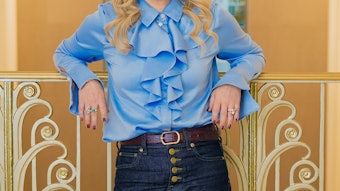Recently, Imogen Matthews of Imogen Matthews Associates spoke with Rowland Manthorpe, a reporter for trend forecasting and consumer insights specialist LS:N Global at its Polarity Paradox Preview Network Evening, held at The Future Laboratory HQ, sharing information on the "Flat Age Society" and the untapped potential of the older female beauty market.
“What occurred to me a couple of years ago is that we talk about all these opportunities and growth within premium beauty, but nobody’s really talking about what opportunities there are for older consumers… Women over 45 account for £1.9 billion worth of product sales in cosmetics and toiletries,” Matthews said. “And when you start to look at it by product category, you find that particularly skin care, body care [and] hand care are big, big markets amongst the over-45s. In fact, you’re talking about almost half of all sales of all those products are to older consumers—and yet, there doesn’t seem to be an awful lot of activity of targeting or activity by the brands and the retailers toward this group.
“I started to interview women in their 50s, 60s, 70s, 80s and in fact one in her 90s to find out what they thought about beauty products and beauty purchasing, the products they use, the claims and the advertising—and its very revealing. They felt they were just being ignored, which is why I came up with the term ‘The Forgotton Demographic.’”
For example, Matthews explained, “The packaging, [and] the fonts that are used on packaging, are light, small fonts used on a dark background, and it’s just hopeless for anybody over the age of 45—they need their reading glasses. There are also the closures [and other functional parts of the packaging]—they can be very, very difficult for older people—and I’m not talking about people in their 50s. I’m talking about older, really elderly consumers. Nobody’s really thought about that. Real opportunities there.”
She also discussed physiological changes and their need to addressed. “As you get older, things change hormonally, and your skin becomes drier. So you become concerned about the dryness and the fact you’ve got wrinkles. ‘I actually want a product that feels comfortable on my skin and makes me look great for my age.'
“If you use young women in an ad for a product which is aimed at, say, a 40- or 50-year-old, that’s going to be wrong. There’s a huge skepticism amongst these older consumers that the ads don’t speak to them. And going into a store as well—it’s all very much aimed at the younger women, the younger consumer. The women who sell the products tend to be younger women, not older women, and this certainly came out in the research. [Older consumers] tend to like to talk peer to peer, and if you’re talking to younger woman, you’re feeling vulnerable about your skin care issues anyway, so the last thing you want to do is open up about the wrinkles around your eyes or the sagging in your cheeks or whatever. Things like having seating, having a chair available when you’re speaking to the consultant [go a long way]. A lot of these things can be small changes, but just acknowledgement that makes older people more inclusive of what they’re trying to do.”
Citing some recent successes, Matthews said, “I was flicking through the channels the other evening, and I saw that QVC had a program that was something like ‘Fabulous Over 40’ beauty product, and I think that’s fantastic, because QVC can do a fantastic educational job. These women who are watching don’t even have to get out of their own chair.”
Matthews also recommended more online connection with older consumers. “It’s all about the fact that they don’t have to speak to somebody face to face, and that is one of the biggest problems for this age group. So that they can learn on their terms without feeling patronized—that’s got to be the way forward.”










